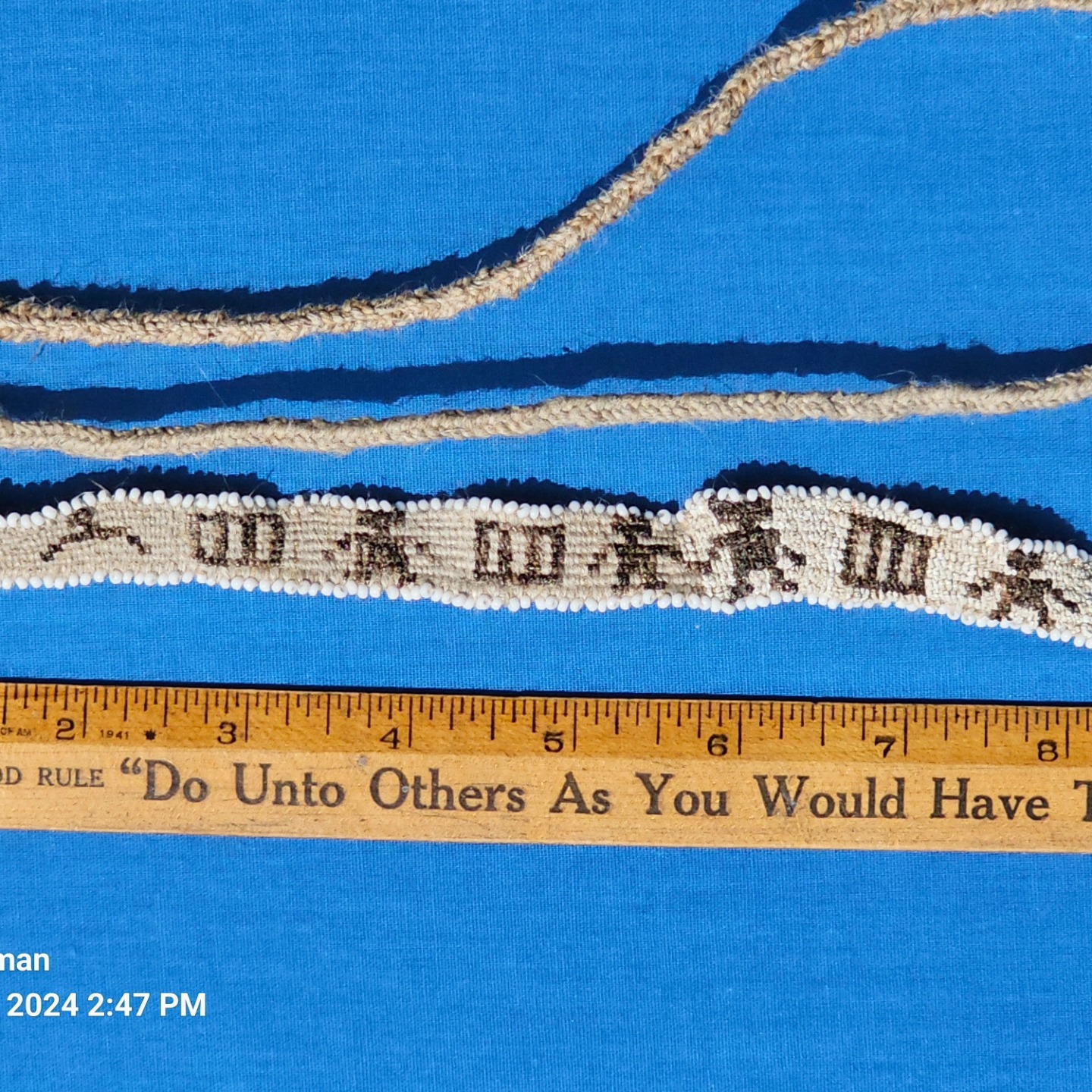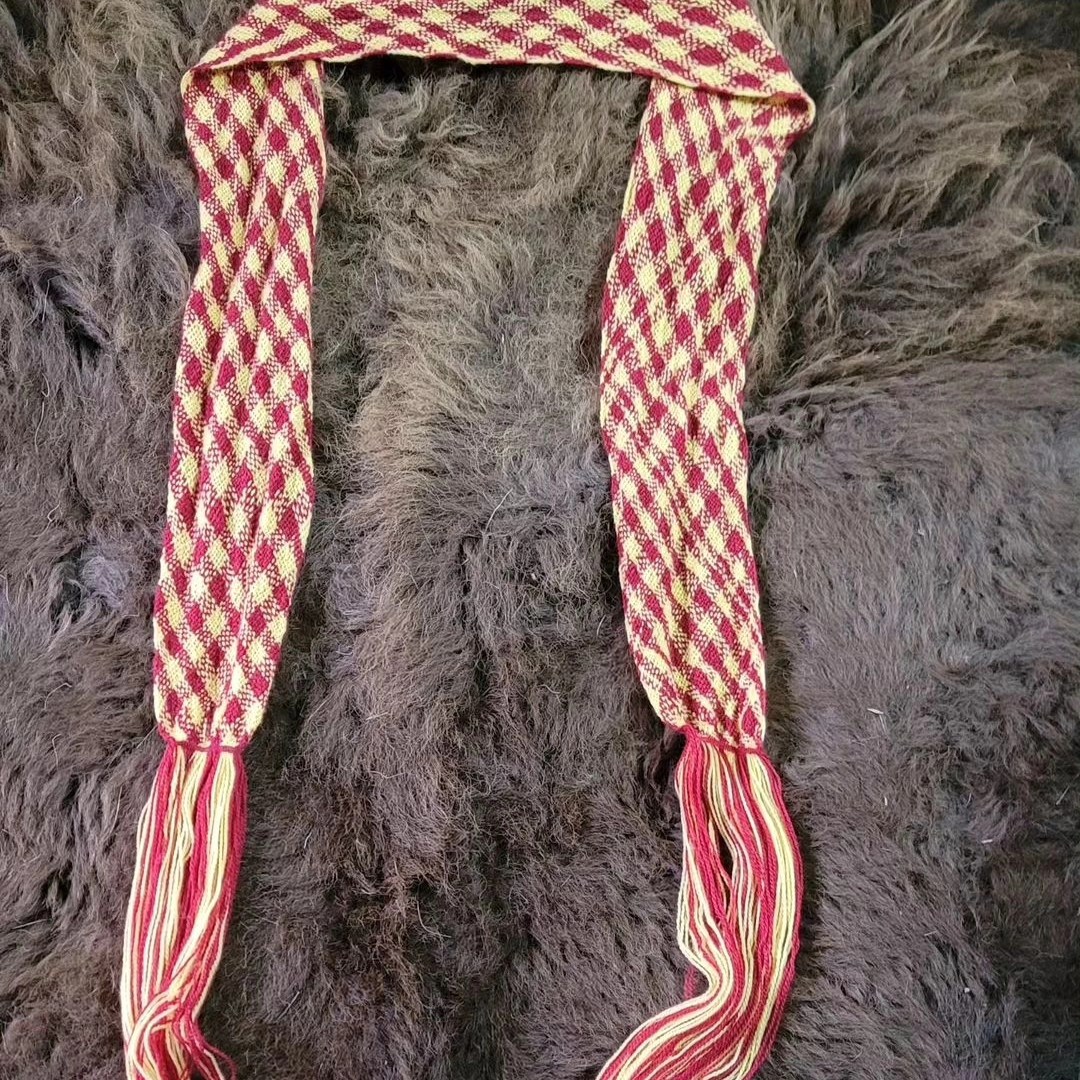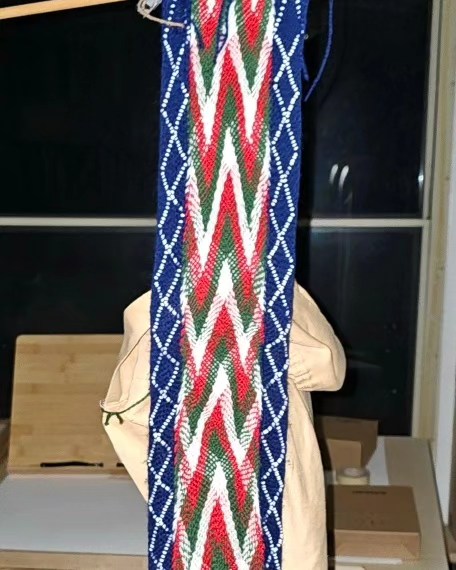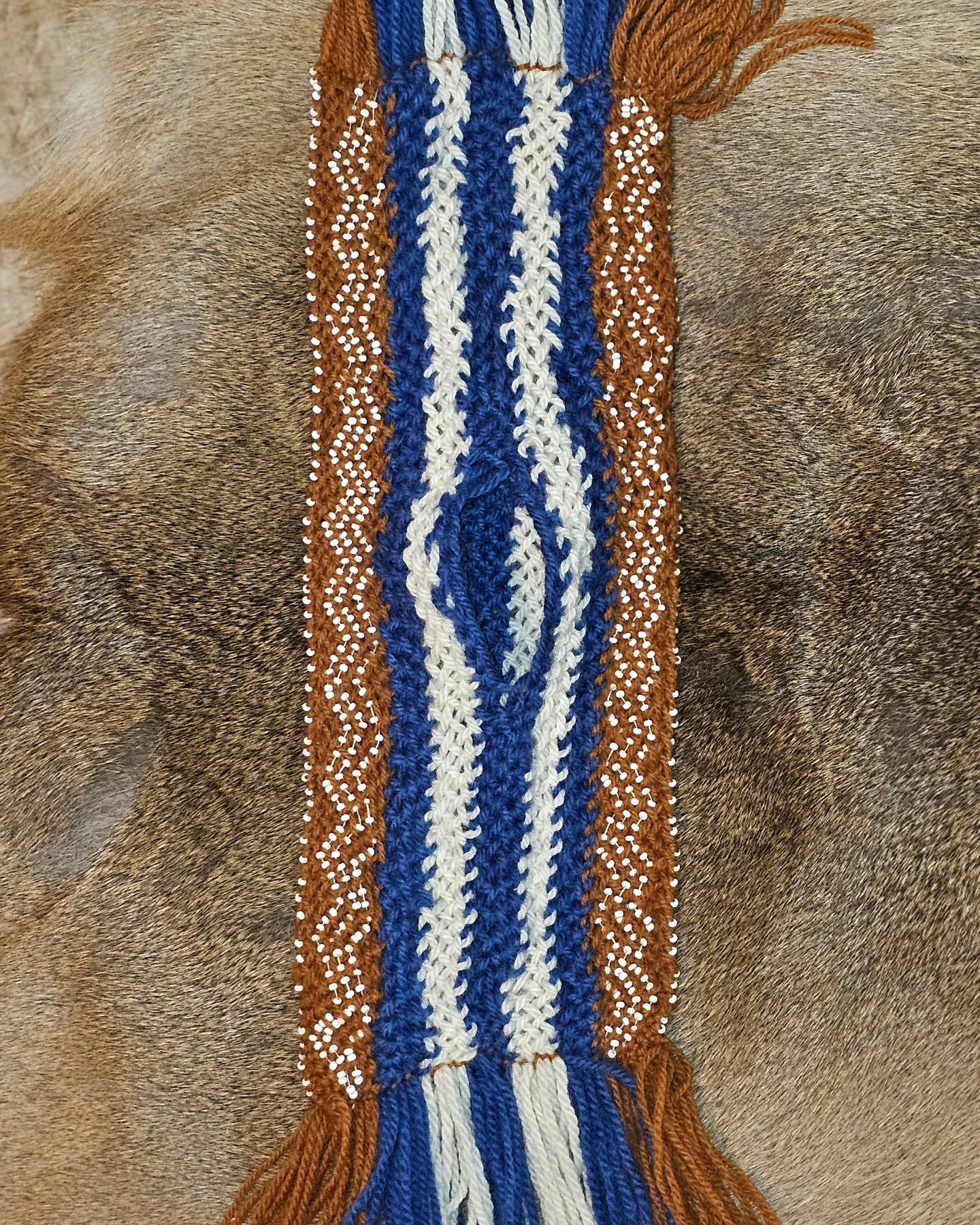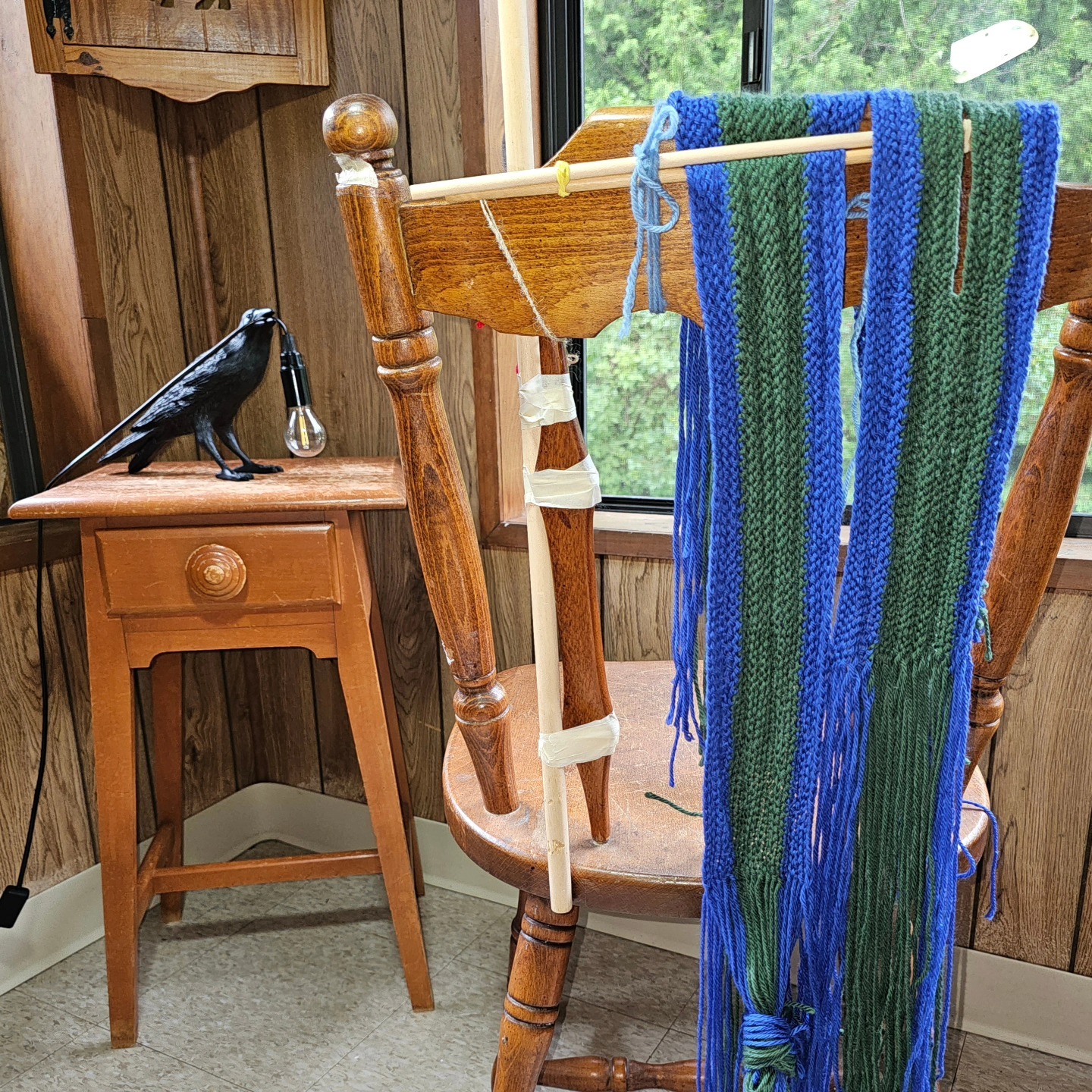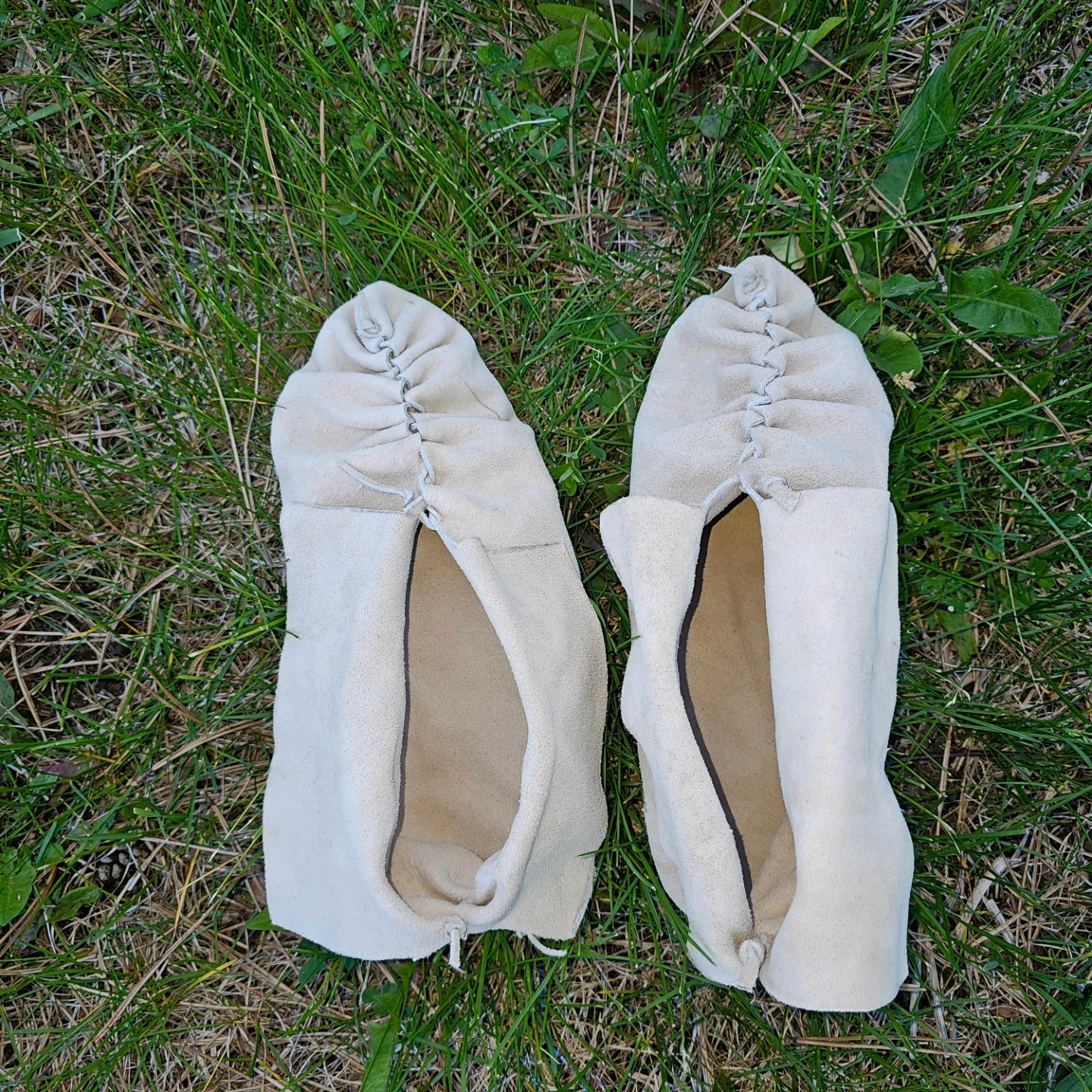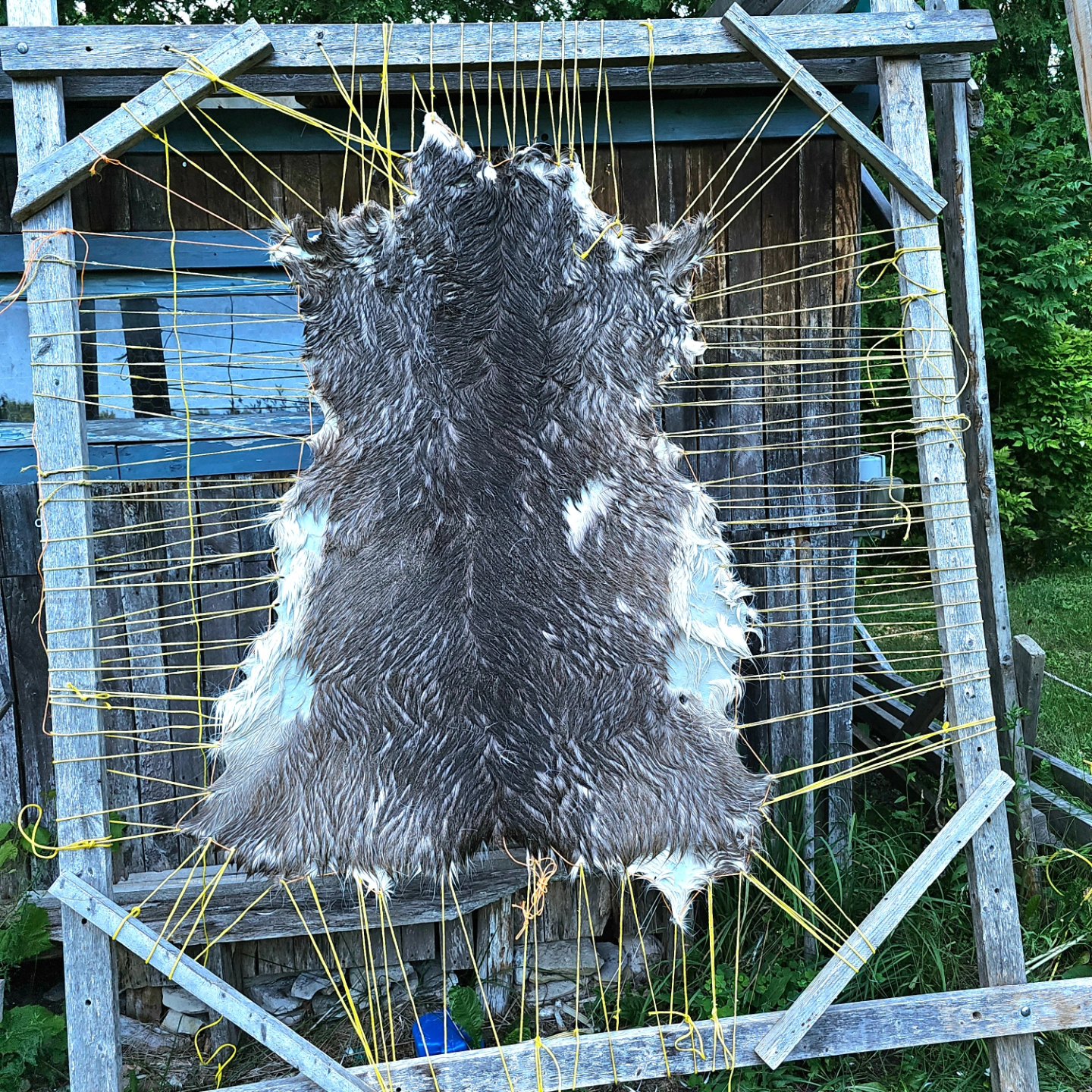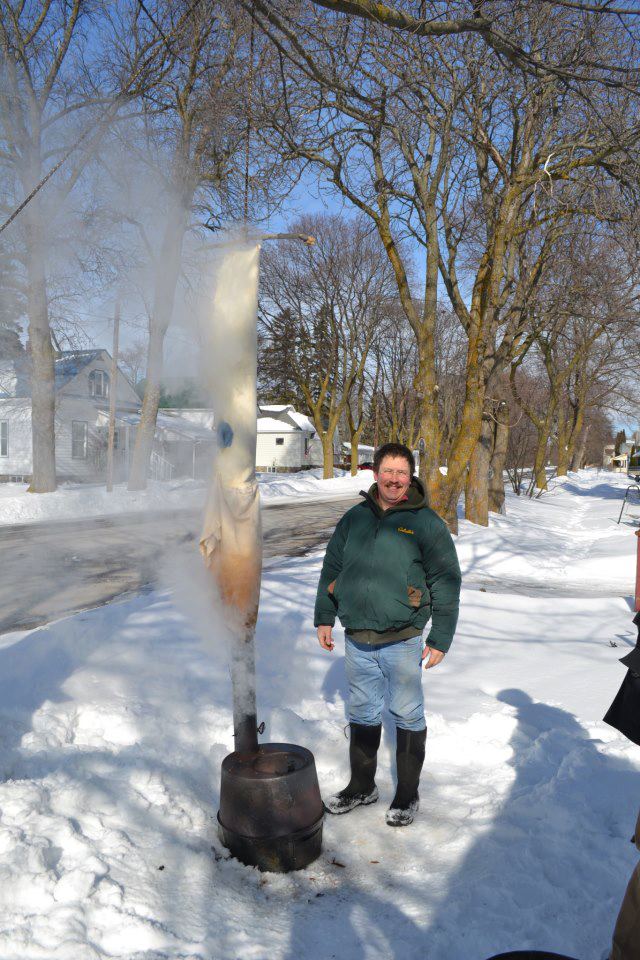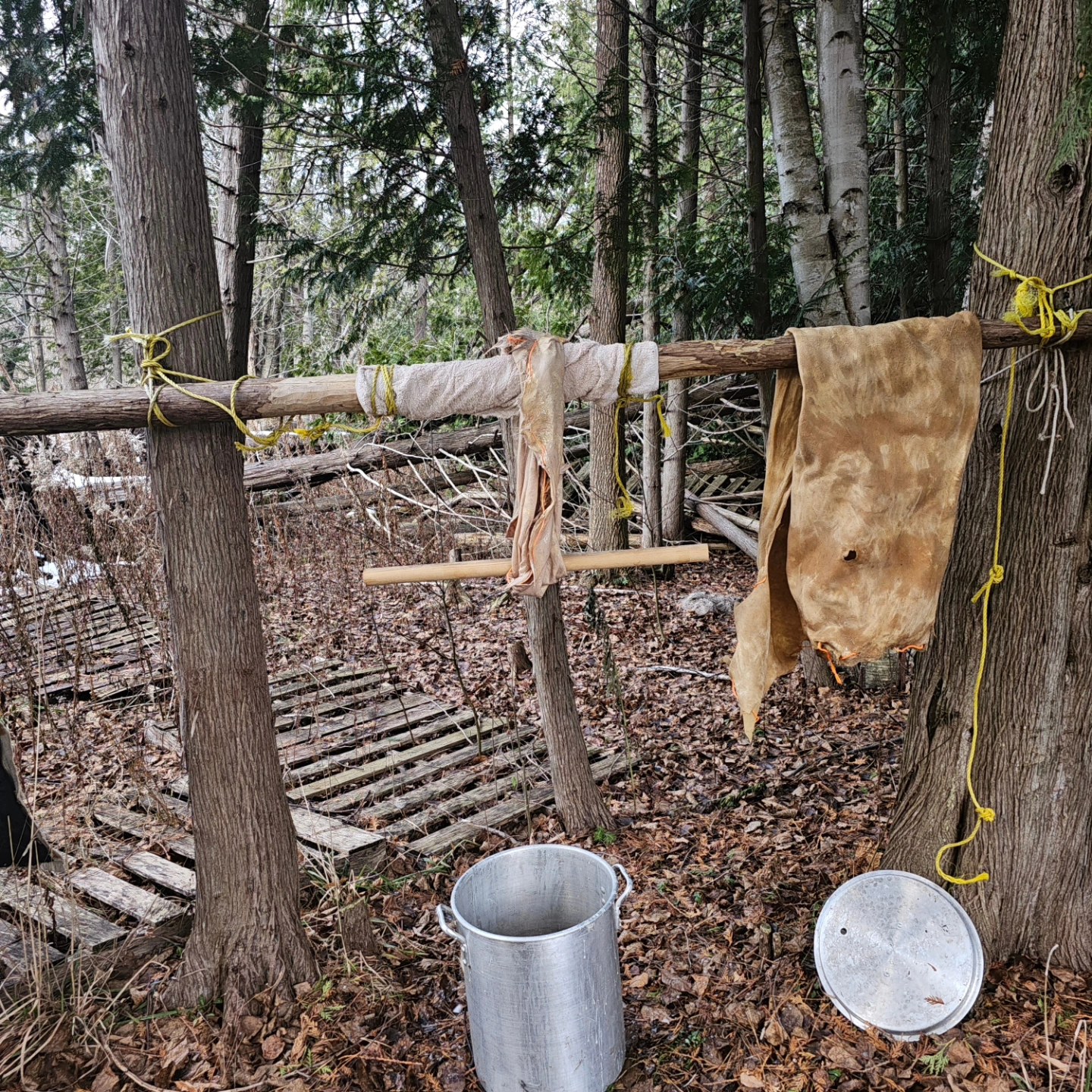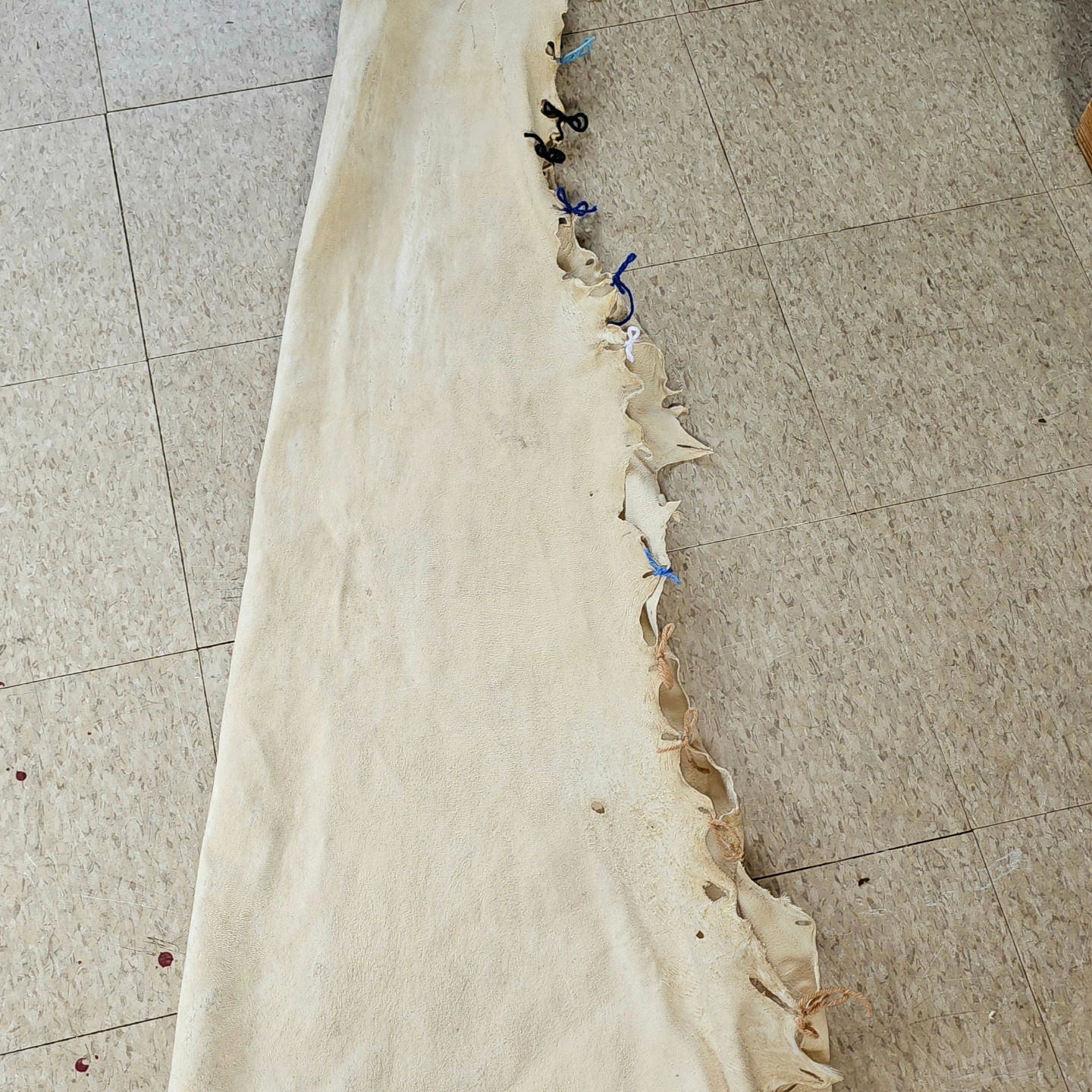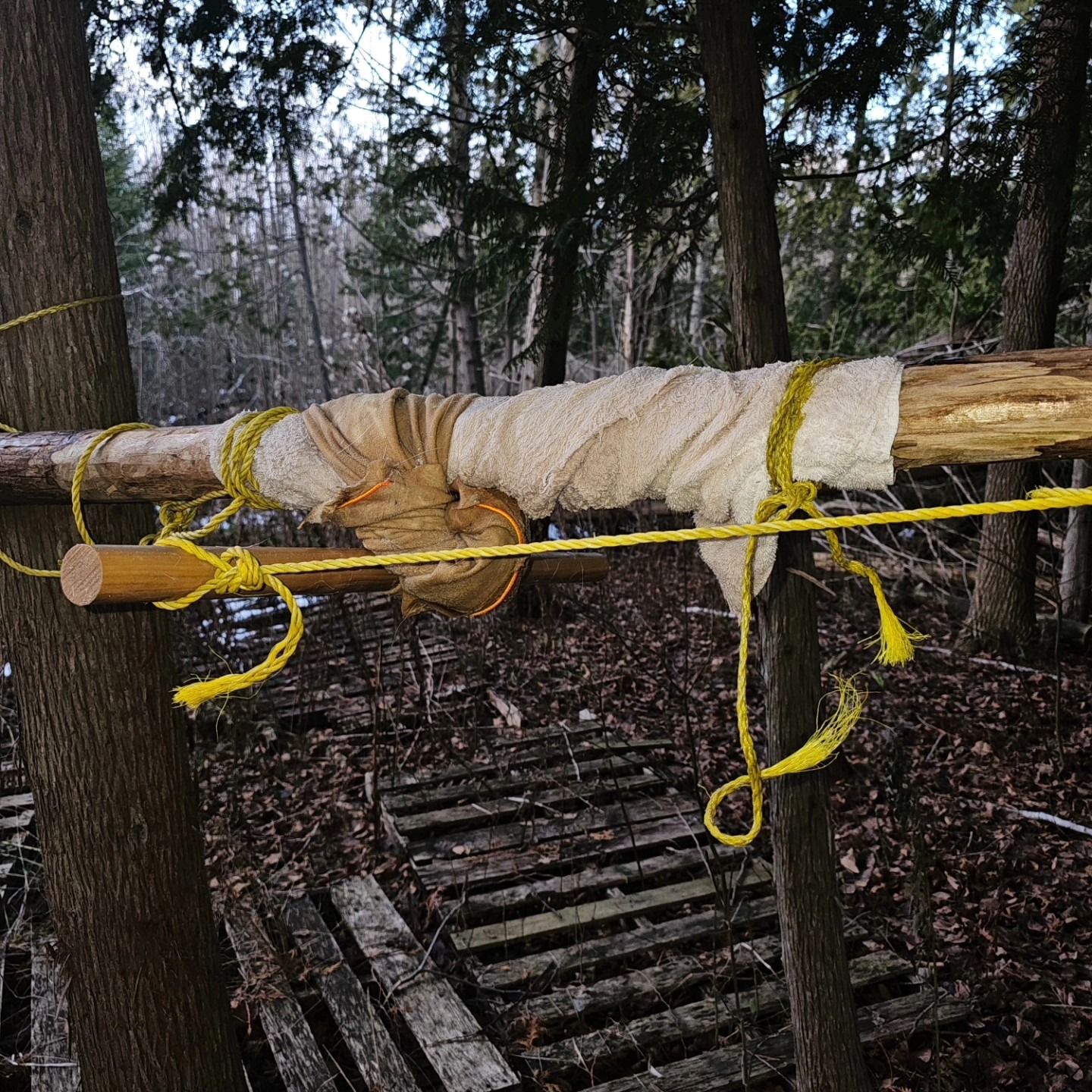Kris Daman is a traditional braintanner, fingerweaver, living historian, and as he describes himself “artistic anthropologist.” He is a leading contributor to the revival and preservation of traditional knowledge. A master of many crafts, our interview briefly introduces Kris Daman, his background and passions, and current projects. We look forward to learning more from Kris in interviews to come, as we take a closer look into traditional skills.
Kris E. Daman may be found on Facebook, and Instagram.
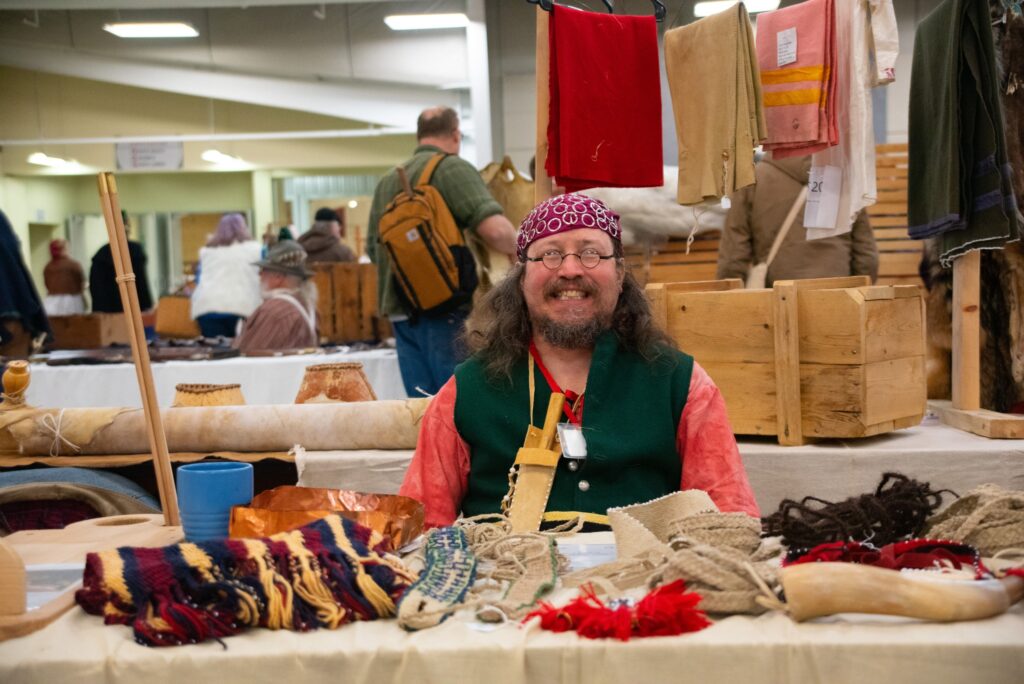
Who is Kris Daman?
The best way to describe myself is as an artistic anthropologist who enjoys researching,
creating, and teaching about archaic art and life skills. I live in Northern Michigan and
spent 8 years in a 2 room log cabin I built with the help of friends from logs on my
property. I braintanned buffalo hides and slept under those during the winter. I worked
for 21 years as a meat cutter and did my art work in the evenings.
I grew up in southern Michigan and ran traplines starting at about the age of 7. The area
I lived in was full of War of 1812, French Canadian, and Native American history &
material culture. My father’s ancestors were fur traders and the family trading post, the
Navarre Anderson trading post is part of the museum complex in Monroe, Michigan.
Archaic Life Skills and Art Forms
With this background I was always interested in learning how furs and skins were tanned, and making old time things like knife sheaths, fur mittens, bags but I didn’t know how to tan yet so the projects didn’t last very long. I attended college in Indiana and got a Bachelor of Arts degree in anthropology at Indiana University, Indianapolis. While living in Indiana I discovered historical reenacting and shooting black powder guns.
On a college field trip to the Chicago Field Museum in 1988 I met a Cherokee lady who was fingerweaving and spent most of the field trip plying her with questions & watching her work. She recommended the book by Alta R. Turner, Fingerweaving and Indian Braiding.
My interest in archaic life skills and art forms became an obsession during college resulting in collecting lots of research, which I used to teach myself how to make Great Lakes & Woodland Indian textiles, hide tanning, & how to use the entire animal. I also worked at various historic sites after graduating college and learned a lot from my co-workers.
Fiberworking
The fiberwork I’ve learned how to do is cleaning, thigh rolling into cordage buffalo wool & hair, and using it for twining & making ropes. I helped skin moose in Northern New Hampshire and brought the hides home and scraped them for tanning. I collected the moose hair and use it in false embroidery. When skinning deer I harvest the back strap sinew for sewing and cordage, the legs for the hock skins, hooves, toe bones for a gambling game, and leg bone to make a hide fleshing tool.
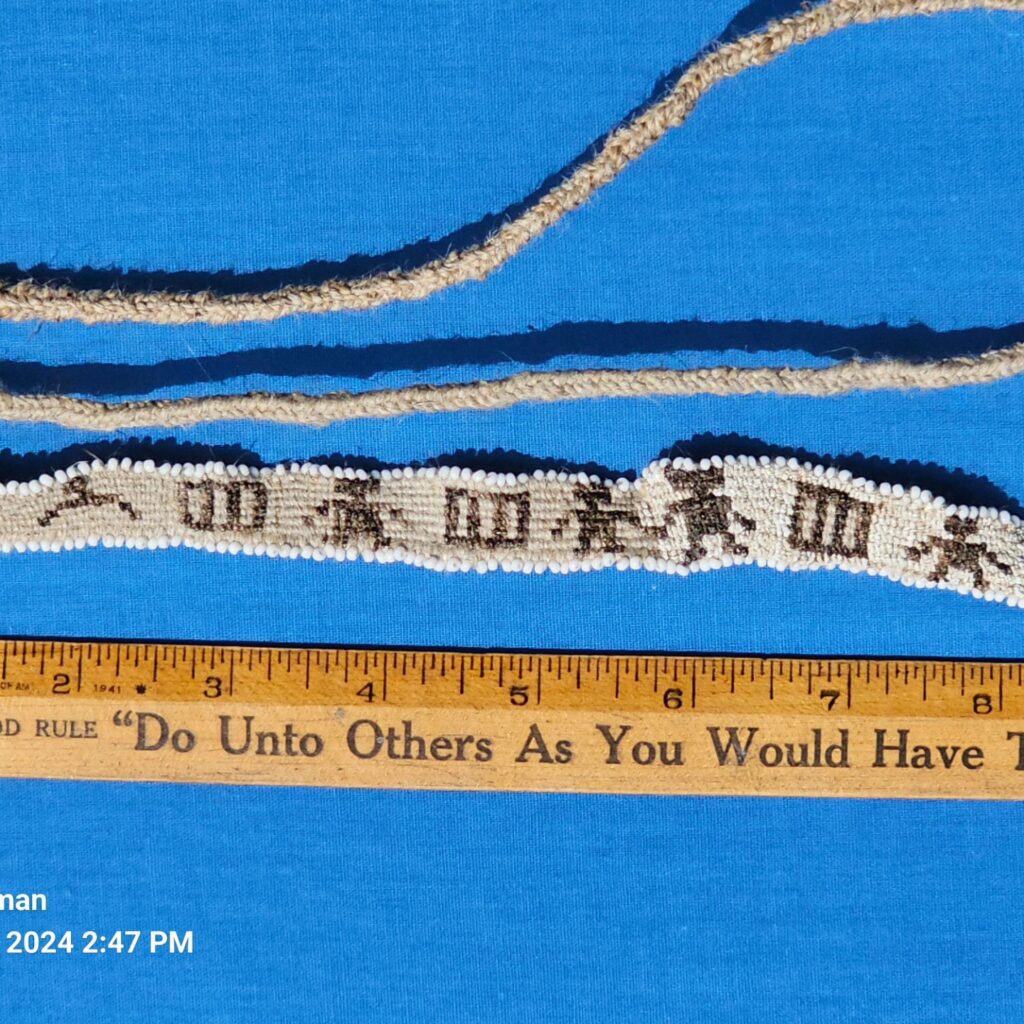
I also use basswood, stinging nettle, milkweed, and dogbane to make cordage. Although I have to admit I’ve been buying hemp and stinging nettle thread off Etsy to save time.
Fingerweaving
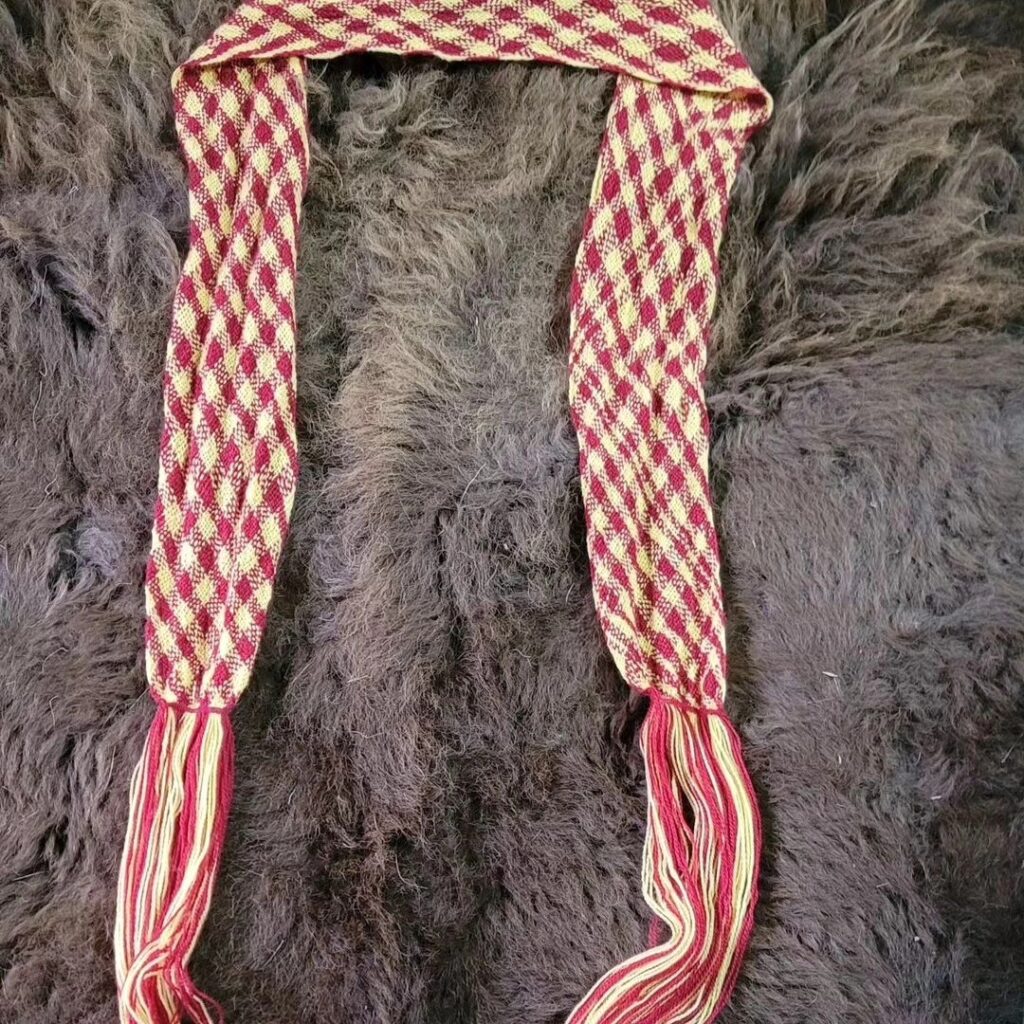
Finger weaving is a loomless weaving technique where yarn is suspended from a stick and then manipulated by the artists fingers to create different colorful patterns or beaded sashes, straps, bags, or garters that were and still are worn by Native people today.
Brain Tanning
Brain tanning is another ancient art form that was practiced all over the world. It [brain] is a fat liquoring tannage.
Brain tanning is the process of turning a raw hide into a soft hair on robe or chamois type leather.

The hide is removed from the animal and fleshed either on a beam or in a frame. At this point the fibers in the hide are glued together in a cross hatch pattern. Our goal is to unglue the fibers and make them parallel to each other.
With the dry scrape method I scrape and soften the hide in a frame. The hide after it is fleshed, is laced into a wooden frame like a picture frame, then left to dry. When it is dry I scrape the epidermis off the flesh side down to the vein lines. Then I scrape the hair side removing all the hair. The neck, spine and rump are thinned on the hair side.

Tanning the Hide
The hide is then removed from the frame and rehydrated in water all night. In the morning I wring the hide out and start the braining process. The oils in the brain lubricate the hide fibers allowing them to realign and the hide to become soft. To “brain” the hide, the hide is sloshed around in a bucket of heated water and a pureed brain solution.
Then, the hide is hung over a horizontal pole. The neck and tail of the hide lay on top of the bar onto of each other. Then the hide is rolled into a donut and twisted with a stick in the donut. The bucket is underneath it to catch the solution. I do this up to 4 times depending upon the size of the hide.
After the hide is thoroughly saturated I either lace it into the frame to be softened with a wooden paddle or just start pulling the hide to soften it.
When the hide is soft and dry I fold it in half, sew it into a tube and suspend it over a low heat very smoky fire. The aldehydes from the wood smoke glue the fibers in place. If the hide gets wet it can be worked back to being soft.
Memorable Projects
Twining a big buffalo hair and basswood cordage bag for the author Timothy Kent. Braintanning my first buffalo hide, It was a 1,200 lb bull. It tanned ok but I didn’t know how to thin a hide then so it was stiff. I’ve only tanned around 8 buffalo hides and I’m still figuring them out.
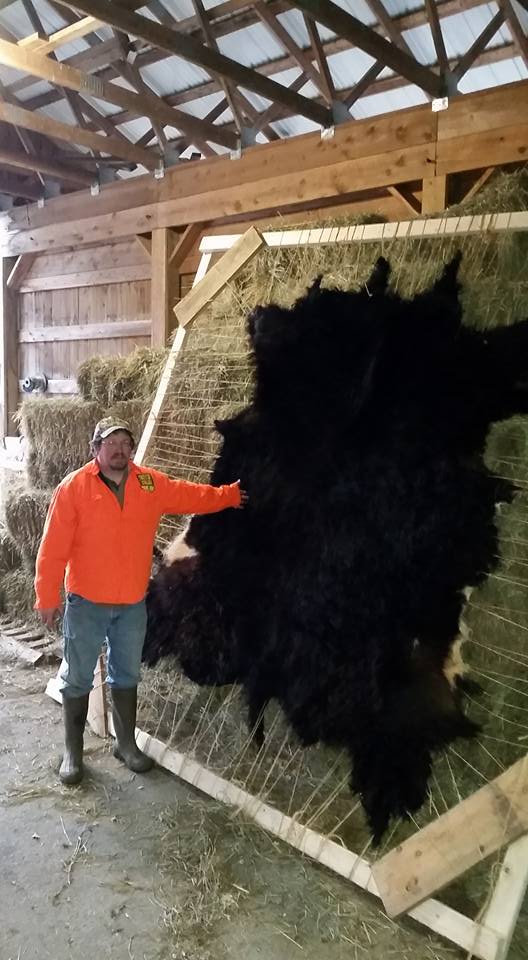
Advice to Beginners
Don’t listen to others & follow your gut. Do lots of research and try everything. It’s all good experience that will help you in your journey.
Fingerweaving resources:
- Alta R. Turner’s, Fingerweaving and Indian Braiding
- Gerald Findlay’s Fingerweaving Basics.
Braintanning resources:
- Dryscrape – Blue Mountain Buckskin by Jim Riggs.
- Wetscrape – Matt Richard’s book Deerskin into Buckskins. His tanning tools are great too.
What is next for Kris Daman?
Just to keep researching, creating and teaching about my interests. I would like to publish a couple of how to books on making tumplines, prisoner collars, and ropes and straps. And a separate book about the art of false embroidered moose hair in Native American textiles.

